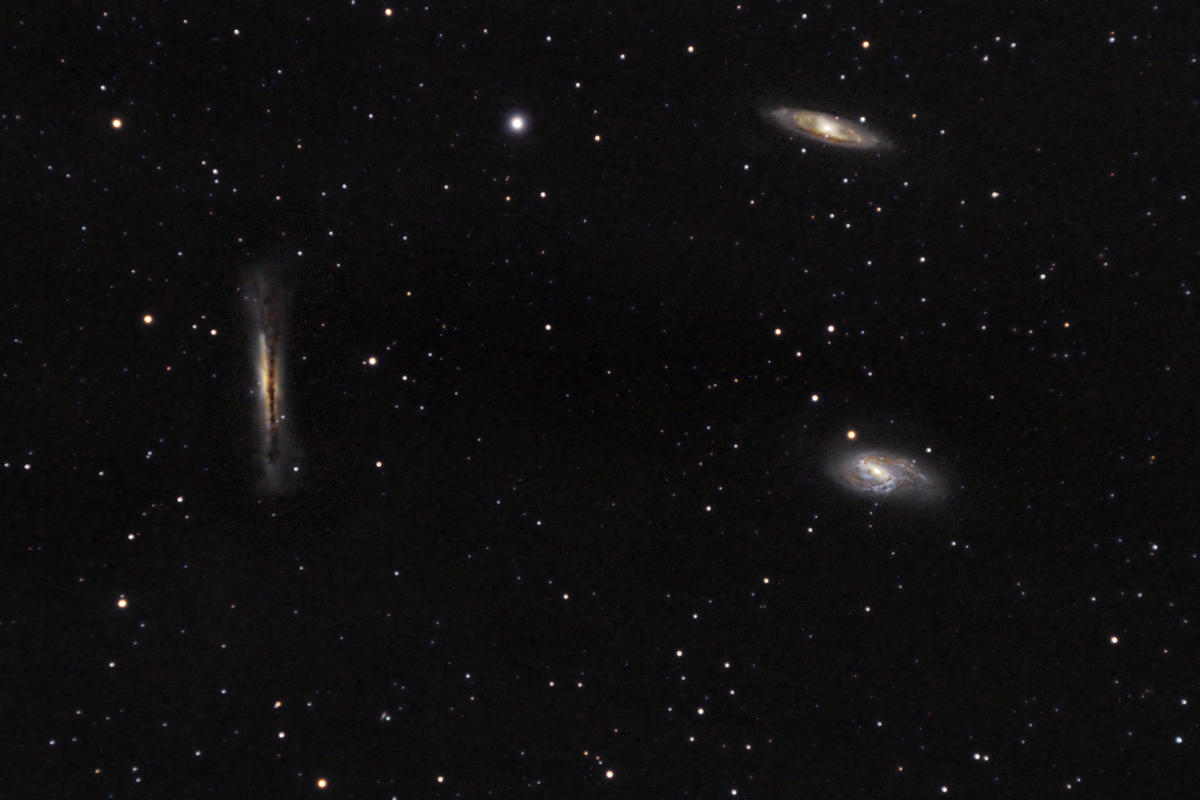
|
Le galassie M65 (NGC 3623), M66 (NGC 3627) e NGC 3628 (Tripletto nel Leone) The galaxies M65 (NGC 3623), M66 (NGC 3627) and NGC 3628 (Leo Triplet) A.R. 11h20m00s - Decl. +13°12'10" |
|
Questa foto delle galassie M65, M66 e NGC 3628 nel Leone è stata scattata
nelle notti del 20, 21 e 27 febbraio 2009 da Arcidosso (GR) al fuoco diretto di un
telescopio Takahashi TSA 102 f/8 su montatura Gemini G41 Obs con
FS2. La foto è la somma di 21 esposizioni da 12 minuti cadauna, scelte fra i meno peggiori di 49 scatti complessivi, con una fotocamera digitale Canon Eos 40D con filtro modificato, settata a 800 ISO, che sono state effettuate con inseguimento mediante rifrattore 120/600 in parallelo e autoguida SBIG ST4. Successivamente i frames sono stati calibrati con Deep Sky Stacker mediante applicazione di 40 dark, 57 flat, 57 dark dei flat e 57 bias complessivi, allineati e sommanti con Registar, e processate nel seguente modo: Separazione delle stelle dalle galassie e ripulitura dei gradienti del fondo cielo. Elaborazione singola delle tre galassie mediante applicazioni di filtri passa alto e passa basso selettivi. Riunione delle stelle all'immagine con regolazione dei livelli di colore e loro bilanciamento This photo of the galaxies M65, M66 and NGC 3628 in Leo (also known as Leo Triplet), was taken during the night of february 20, 21 and 27, 2009 from Arcidosso, near Grosseto, in Italy, at the prime focus of a Takahashi TSA 102 refractor telescope at f/8 on a Gemini G41 Obs mount with FS2. The photo is the sum of 21 frames, each of 12 minutes, (chosen between the less worse of 49) with a Dslr camera Canon Eos 40D (filter modified), exposed at 800 ISO, taken with a Sbig ST4 autoguide on a refractor 120/600. Then I calibtared the frames with Deep Sky Stacker with a total of 40 darks, 57 flats, 57 darks of flat, 57 offsets, stacked with Registar, and processed in the following way: Separation of the stars from the galaxies and cleaning of the gradients of the background. Separate processing of the galaxies using selective filters high pass and low pass. Joining the stars in the image calibrating and balancing the color. |